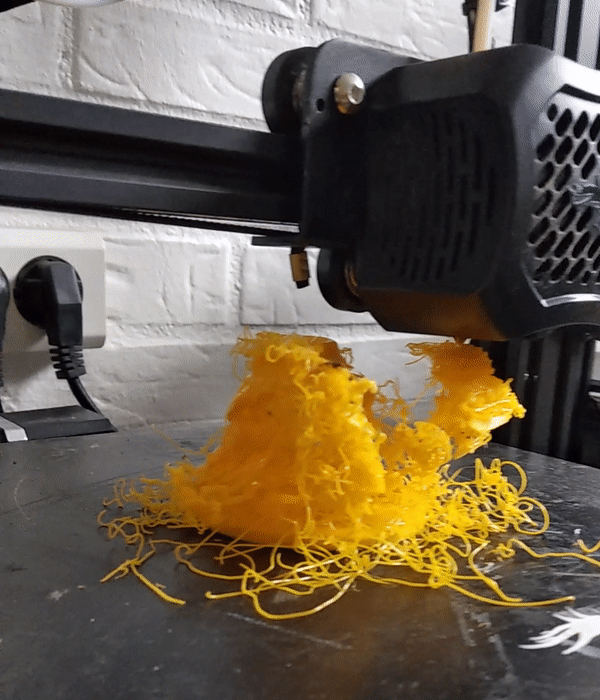Back when I wanted to monitor the VOCs in the print room, I built one myself and had to set up a home automation system to receive the data, using Home Assistant (green). This seemed an expensive way to skip buying an expensive VOC detector, but Home Assistant can do so much more, so I'm trying to make good use of my investment.
I've already put all of my 3d printers on a dashboard that lets me monitor their progress, as well as the aforementioned VOC sensor. I have smart switches on the Bento Box (a little charcoal/hepa filter setup inside the machine I use for toxic materials) as well as the room air purifier.
I've been able to jack into my security cameras and sensors and route that information to dashboards as well, which turns out to be much faster and more convenient than the little control panel pad provided by Vivint.
My car also provides data to the myBMW app, so I was able to leverage that connection and get all my car information onto a dashboard, including a location map if I ever lose it in a parking lot, or heaven forbid, it gets stolen.
Finally, I have replaced almost every light in the house with zigbee mesh network lighting. My lights are now off the internet, and Alexa no longer controls my lighting. The downside: Loss of voice automation. I have to go to my computer, my phone, a tablet, or the physical switch to control the lights. This is a definite step backwards. But I have goals:
First step: get a couple mmwave motion sensors which are sensitive enough to even detect someone sitting still by detecting their breathing, and put them in places like the living room where i want the following rules enforced: "When this room is empty, the lights are always off. If someone is here, they're always on." This will require some fine tuning for when I want to have guests watch TV in the living room in the dark, but for now that will do. I just got this done in the living room. I'm going to set it up in the craft room and kitchen/dining areas next. All the other rooms in the house have much more conditional lighting. You don't want lights on if you're sleeping, for instance. Which leads me to step 2.
Step 2: Get a voice speaker/mic that integrates with Home Assistant, set up a local AI on a dedicated bare-bones pc, and use it to control lights and such. The speaker/mic is on the way. I've played with local AIs already and use them instead of ChatGPT any time I need AI for anything (which isn't much, honestly). And there's an integration with Home Assistant that will do voice to text and pipe it to the LLM and then do text-to-voice and pipe it back to speakers. So this one shouldn't be too big of a task once the hardware gets here. When it's working, I can get more hardware and expand to the rest of the house.
I've already put all of my 3d printers on a dashboard that lets me monitor their progress, as well as the aforementioned VOC sensor. I have smart switches on the Bento Box (a little charcoal/hepa filter setup inside the machine I use for toxic materials) as well as the room air purifier.
I've been able to jack into my security cameras and sensors and route that information to dashboards as well, which turns out to be much faster and more convenient than the little control panel pad provided by Vivint.
My car also provides data to the myBMW app, so I was able to leverage that connection and get all my car information onto a dashboard, including a location map if I ever lose it in a parking lot, or heaven forbid, it gets stolen.
Finally, I have replaced almost every light in the house with zigbee mesh network lighting. My lights are now off the internet, and Alexa no longer controls my lighting. The downside: Loss of voice automation. I have to go to my computer, my phone, a tablet, or the physical switch to control the lights. This is a definite step backwards. But I have goals:
First step: get a couple mmwave motion sensors which are sensitive enough to even detect someone sitting still by detecting their breathing, and put them in places like the living room where i want the following rules enforced: "When this room is empty, the lights are always off. If someone is here, they're always on." This will require some fine tuning for when I want to have guests watch TV in the living room in the dark, but for now that will do. I just got this done in the living room. I'm going to set it up in the craft room and kitchen/dining areas next. All the other rooms in the house have much more conditional lighting. You don't want lights on if you're sleeping, for instance. Which leads me to step 2.
Step 2: Get a voice speaker/mic that integrates with Home Assistant, set up a local AI on a dedicated bare-bones pc, and use it to control lights and such. The speaker/mic is on the way. I've played with local AIs already and use them instead of ChatGPT any time I need AI for anything (which isn't much, honestly). And there's an integration with Home Assistant that will do voice to text and pipe it to the LLM and then do text-to-voice and pipe it back to speakers. So this one shouldn't be too big of a task once the hardware gets here. When it's working, I can get more hardware and expand to the rest of the house.
Last edited:


